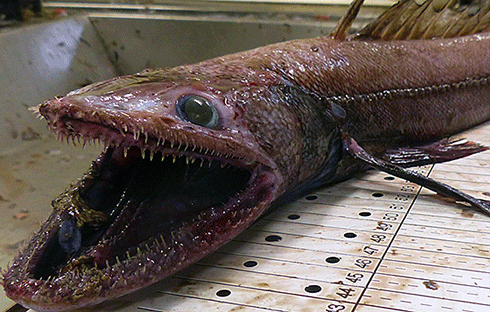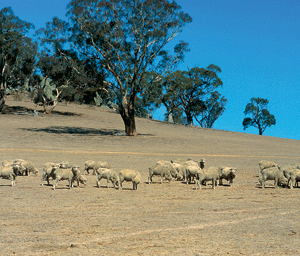
|
Published: 10 June 2014
Deep sea fish in UK waters provide natural carbon capture and storage
Scientists have discovered that deep-water fish living on the continental slope around the UK play an important role carrying carbon from the surface to the seafloor.
The UK and Irish team found that the fish remove and store more than one million tonnes of CO2 from UK and Irish surface waters every year.
The research, published in Proceedings of the Royal Society B, used novel biochemical tracers to piece together the diets of deep water fish and reveal their role in transferring carbon to the ocean depths.
They found that more than half of all the fishes living on the seafloor get their energy from animals that otherwise go back to the surface and therefore become a carbon capture and storage facility.
The ‘carbon chain’ begins at mid-slope depths, where a huge volume of animals make daily vertical migrations to feed at the surface during the night. These animals then transport nutrients from the surface back to the deep.
Fishes that live at or near the seafloor swim up to capture these mid-slope animals, bringing their biomass down to the seafloor.
Lead author, Dr Clive Trueman from the University of Southampton, says: ‘As fishing, energy extraction and mining extend into deeper waters, these unfamiliar and seldom seen fishes in fact provide a valuable service to all of us.
‘Recognising and valuing these ecosystem services is important when we make decisions about how to exploit deep water habitats for food, energy or mineral resources.’
As it is difficult to study animals living under a kilometre or more of water, the researchers measured forms, or isotopes, of carbon and nitrogen, in the muscles of fish caught in deepwater research surveys on the continental slope west of Ireland, at water depths ranging from 500 to 1800m.
Small differences in the mass of isotopes mean they are processed at slightly different speeds in the body, leading to patterns that show ‘who eats who’ in the slope ecosystem. By measuring the isotopes in the most common species, the researchers could estimate how much carbon is captured and stored by the deep water fish.
Source: University of Southampton




